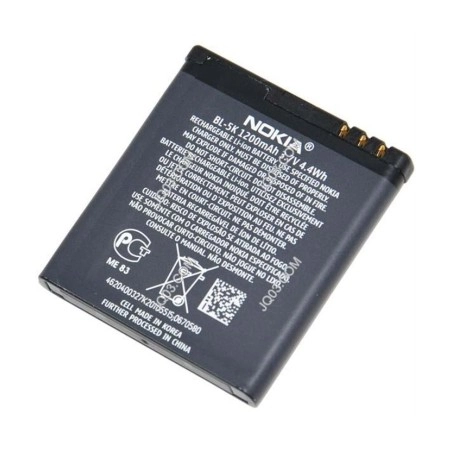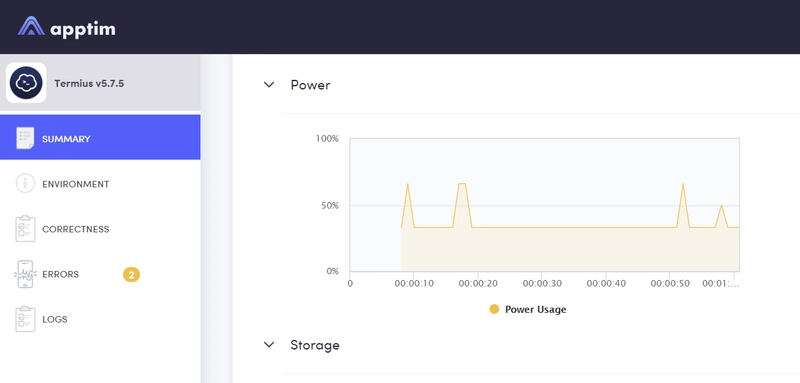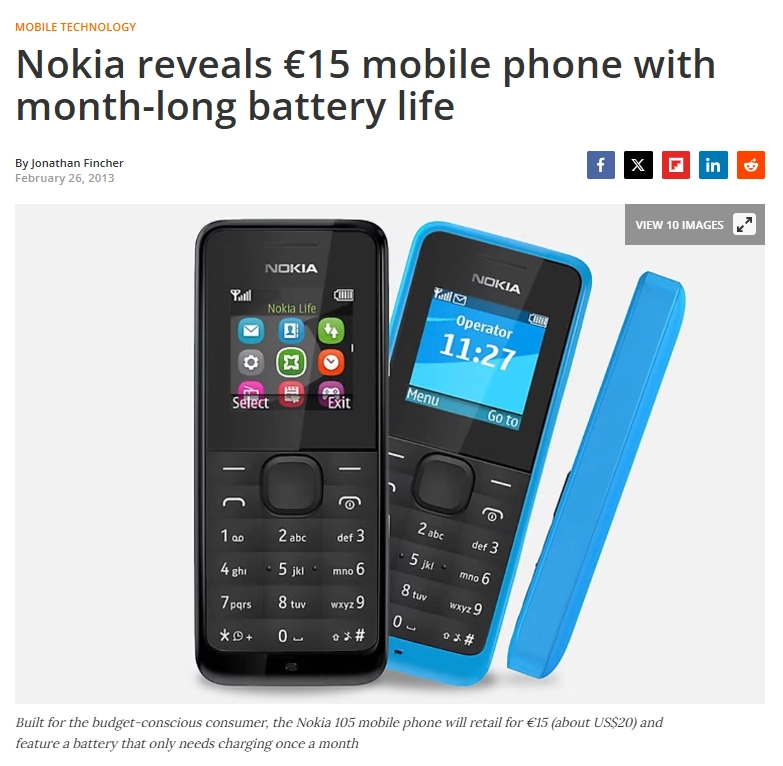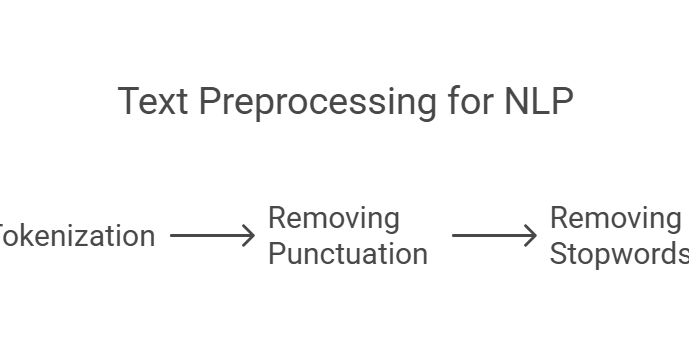The Most Overlooked KPI: Battery Consumption
Battery Consumption: A Tester's Perspective As a seasoned QA professional with a background in performance testing, I've witnessed firsthand the evolution of mobile devices and the importance of battery life. My journey began at Nokia Romania, where I worked as a Senior QA Engineer, focusing on manual and performance testing, including battery consumption. This experience not only honed my skills but also instilled in me a deep appreciation for the role of battery efficiency in mobile device performance. From Manual to Automated Testing In the early days, testing battery consumption was a manual process. We would meticulously monitor devices under various usage scenarios to assess how long they lasted. Fast-forward to today, tools like Apptim have revolutionized this process by automating battery consumption testing. This shift not only saves time but also provides more accurate and consistent results. Why Battery Consumption Matters Battery life is no longer just about user convenience; it's a critical performance metric. With billions of devices worldwide, inefficient battery use contributes significantly to energy waste and environmental strain. As mobile testers, it's our responsibility to ensure that apps and devices are optimized for energy efficiency. Find more statistics at Statista Lessons from Nokia's Legacy Nokia devices were renowned for their long battery life, often lasting over six days on a single charge. This was due to efficient design and minimal power consumption. Today's smartphones, despite larger batteries, often struggle to last beyond a day due to advanced features and constant connectivity. This shift highlights the need for renewed focus on battery efficiency. On a full charge, the Nokia 105 can deliver 12.5 hours of talk time or remain powered for up to a whopping 35 days (842 hours) on standby. The Future of Performance Testing As we move forward, it's crucial that battery consumption becomes a central KPI in performance testing. By leveraging automation tools and emphasizing energy efficiency, we can create more sustainable and user-friendly mobile experiences. My experience at Nokia Romania and years of working in performance testing have taught me that even small improvements in battery life can make a significant difference in user satisfaction and environmental impact. To all mobile testers, I urge you to prioritize battery consumption in your testing strategies. Let's work together to ensure that our devices not only perform well but also sustainably. By doing so, we contribute to a more environmentally conscious tech industry and enhance the overall user experience. About the Author: As a seasoned QA professional with a background in performance testing, I have been dedicated to ensuring that mobile devices and apps meet the highest standards of efficiency and user experience. My experience at Nokia Romania has been instrumental in shaping my approach to testing, and I continue to advocate for the importance of battery consumption as a key performance indicator in the mobile testing community.

Battery Consumption: A Tester's Perspective
As a seasoned QA professional with a background in performance testing, I've witnessed firsthand the evolution of mobile devices and the importance of battery life. My journey began at Nokia Romania, where I worked as a Senior QA Engineer, focusing on manual and performance testing, including battery consumption. This experience not only honed my skills but also instilled in me a deep appreciation for the role of battery efficiency in mobile device performance.
From Manual to Automated Testing
In the early days, testing battery consumption was a manual process. We would meticulously monitor devices under various usage scenarios to assess how long they lasted. Fast-forward to today, tools like Apptim have revolutionized this process by automating battery consumption testing. This shift not only saves time but also provides more accurate and consistent results.
Why Battery Consumption Matters
Battery life is no longer just about user convenience; it's a critical performance metric. With billions of devices worldwide, inefficient battery use contributes significantly to energy waste and environmental strain. As mobile testers, it's our responsibility to ensure that apps and devices are optimized for energy efficiency.

Find more statistics at Statista
Lessons from Nokia's Legacy
Nokia devices were renowned for their long battery life, often lasting over six days on a single charge. This was due to efficient design and minimal power consumption. Today's smartphones, despite larger batteries, often struggle to last beyond a day due to advanced features and constant connectivity. This shift highlights the need for renewed focus on battery efficiency.
On a full charge, the Nokia 105 can deliver 12.5 hours of talk time or remain powered for up to a whopping 35 days (842 hours) on standby.
The Future of Performance Testing
As we move forward, it's crucial that battery consumption becomes a central KPI in performance testing. By leveraging automation tools and emphasizing energy efficiency, we can create more sustainable and user-friendly mobile experiences. My experience at Nokia Romania and years of working in performance testing have taught me that even small improvements in battery life can make a significant difference in user satisfaction and environmental impact.
To all mobile testers, I urge you to prioritize battery consumption in your testing strategies.
Let's work together to ensure that our devices not only perform well but also sustainably. By doing so, we contribute to a more environmentally conscious tech industry and enhance the overall user experience.
About the Author:
As a seasoned QA professional with a background in performance testing, I have been dedicated to ensuring that mobile devices and apps meet the highest standards of efficiency and user experience. My experience at Nokia Romania has been instrumental in shaping my approach to testing, and I continue to advocate for the importance of battery consumption as a key performance indicator in the mobile testing community.










































































































































































![[The AI Show Episode 142]: ChatGPT’s New Image Generator, Studio Ghibli Craze and Backlash, Gemini 2.5, OpenAI Academy, 4o Updates, Vibe Marketing & xAI Acquires X](https://www.marketingaiinstitute.com/hubfs/ep%20142%20cover.png)



























































































































![[FREE EBOOKS] The Kubernetes Bible, The Ultimate Linux Shell Scripting Guide & Four More Best Selling Titles](https://www.javacodegeeks.com/wp-content/uploads/2012/12/jcg-logo.jpg)



![From drop-out to software architect with Jason Lengstorf [Podcast #167]](https://cdn.hashnode.com/res/hashnode/image/upload/v1743796461357/f3d19cd7-e6f5-4d7c-8bfc-eb974bc8da68.png?#)






































































































.png?#)




.jpg?#)
































_Christophe_Coat_Alamy.jpg?#)







































































































![Rapidus in Talks With Apple as It Accelerates Toward 2nm Chip Production [Report]](https://www.iclarified.com/images/news/96937/96937/96937-640.jpg)











































































































































